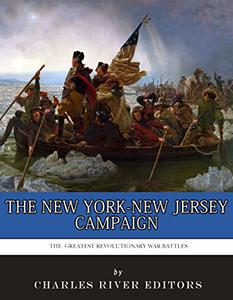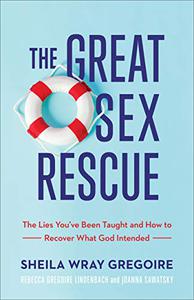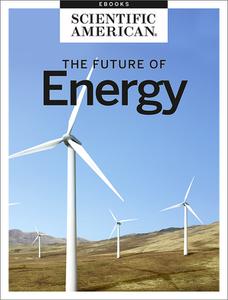
 |
 Michael Leahy, "The Last Innocents: The Collision of the Turbulent Sixties and the Los Angeles Dodgers" English | 2017 | ISBN: 0062360574, 0062360566 | EPUB | pages: 512 | 0.7 mb Winner of the CASEY Award for Best Baseball Book of the Year  Herman Wouk, "The Language God Talks" English | 2011 | ISBN: 0316078441 | EPUB | pages: 209 | 0.6 mb "More years ago than I care to reckon up, I met Richard Feynman." So begins The Language God Talks, Herman Wouk's gem on navigating the divide between science and religion. In one rich, compact volume, Wouk draws on stories from his life as well as on key events from the 20th century to address the eternal questions of why we are here, what purpose faith serves, and how scientific fact fits into the picture. He relates wonderful conversations he's had with scientists such as Feynman, Murray Gell-Mann, Freeman Dyson, and Steven Weinberg, and brings to life such pivotal moments as the 1969 moon landing and the Challenger disaster.  Sharon Zukin, "The Innovation Complex: Cities, Tech, and the New Economy" English | 2020 | pages: 312 | ISBN: 0190083832, 0197621600 | PDF | 12,3 mb You hear a lot these days about "innovation and entrepreneurship" and about how "good jobs" in tech will save our cities. Yet these common tropes hide a stunning reality: local lives and fortunes are tied to global capital. You see this clearly in metropolises such as San Francisco and New York that have emerged as "superstar cities." In these cities, startups bloom, jobs of the future multiply, and a meritocracy trained in digital technology, backed by investors who control deep pools of capital, forms a new class: the tech-financial elite. In The Innovation Complex, the eminent urbanist Sharon Zukin shows the way these forces shape the new urban economy through a rich and illuminating account of the rise of the tech sector in New York City. Drawing from original interviews with venture capitalists, tech evangelists, and economic development officials, she shows how the ecosystem forms and reshapes the city from the ground up.
 Linda Benson, "The Ili Rebellion: Muslim Challenge to Chinese Authority in Xingjiang, 1944-49 " English | ISBN: 0873325095 | | 306 pages | PDF | 4 MB In 1944 Moslem forces in China's westernmost province of Xinjiang rose against the Chinese authorities and succeeded in establishing a small independent Islamic state - the East Turkestan Republic. Based on newly available archival material, this book describes the Moslem challenge to Chinese rule and documents the Nationalist government's response to newly awakened Turkic-Moslem nationalism on China's most remote and politically sensitive north-western frontier. With this book, Linda Benson aims to break new ground in the study of Sino-Soviet relations and especially of the policies of Chinese governments toward their national minorities.  The Greatest Revolutionary War Battles: The New York-New Jersey Campaign by Charles River Editors English | June 12, 2015 | ISBN: 1514319594 | 75 pages | EPUB | 2.47 Mb *Includes pictures *Includes accounts of the fighting around New York City *Includes online resources and a bibliography for further reading *Includes a table of contents After the siege of Boston forced the British to evacuate that city in March 1776, Continental Army commander George Washington suspected that the British would move by sea to New York City, the next logical target in an attempt to end a colonial insurrection. He thus rushed his army south to defend the city. Washington guessed correctly, but it would be to no avail. Unlike Boston, New York City's terrain featured few defensible positions. The city lacked a high point from which to launch a siege, as the peninsula of Boston was fortunate to have. Moreover, Washington wasn't sure defending the city was necessary, hoping that an expedition launched toward Quebec like the one Benedict Arnold had led in late 1775 would keep the British away from New York anyway. However, Congress thought otherwise, and demanded that Washington defend New York. Washington thus did what he was told, and it nearly resulted in the army's demise. In the summer of 1776, the British conducted the largest amphibious expedition in North America's history at the time, landing over 20,000 troops on Long Island. British General William Howe, who had led the British at Bunker Hill and would later become commander in chief of the armies in North America, easily captured Staten Island, which Washington was incapable of defending without a proper navy. Washington's army attempted to fight, but Washington was badly outmaneuvered, and his army was nearly cut off from escape. The withdrawal across New York City was enormously disorderly, with many of Washington's troops so scared that they deserted. Others were sick as a result of the dysentery and smallpox plaguing the Continental Army in New York. In what was arguably the worst defeat of the Revolution, Washington was ashamed, and he also felt betrayed, by both his troops and Congress. To escape from New York, Washington led a tactical retreat across the East River and off Long Island in the middle of the night without British knowledge. This retreat prevented the annihilation of the colonial army in New York, but with Washington being pushed west across New Jersey and into Pennsylvania, Congress was forced to flee Philadelphia. And with this string of crucial British successes in 1776, the Revolution was on the brink of failure. The Continental Army, now in Pennsylvania, had lost over 5,000 men during its retreat through New York and New Jersey and now had fewer than 5,000 able soldiers. That winter, one of the men in camp, Thomas Paine, would write The American Crisis, beginning with the famous words, "These are the times that try men's souls." However, Washington would famously cross the Delaware River on Christmas night to attack British forces at Trenton, and he was able to compel the British to suspend the winter campaign after fighting around Princeton. Nonetheless, in the early months of 1777, the colonists were in dire straits and the British were Descriptionting a campaign in the coming months to put down the revolution once and for all. The Greatest Revolutionary War Battles: The New York-New Jersey Campaign comprehensively covers the events that led up to the campaign, the fighting itself, and the aftermath of the conflict. Along with maps and pictures of important people, places, and events, you will learn about the campaign like never before, in no time at all.
 The Great Sex Rescue: The Lies You've Been Taught and How to Recover What God Intended by Sheila Wray Gregoire English | March 2, 2021 | ISBN: 1540900827 | 213 pages | PDF | 6.36 Mb What if it's not your fault that sex is bad in your marriage?
 The Great Inoculator: The Untold Story of Daniel Sutton and his Medical Revolution by Gavin Weightman English | September 22, 2020 | ISBN: 0300241445 | 181 pages | PDF | 5.80 Mb This timely history of the neglected figure of Daniel Sutton-the medical revolutionary who paved the way for present-day vaccination-was named a best book of 2020 by BBC History Magazine  The Great Correction: Make Profits as Markets Rise and Fall by Mark Gruner English | 2020 | ISBN: N/A | ASIN: B08HHHCCX6 | 107 pages | MOBI | 0.59 Mb Learn how to make money in any market! There are times to buy and times to sell. Most investors do not know the difference.  The Future of Energy by Scientific American Editors English | July 15th, 2022 | ISBN: 9781466833869 | 180 pages | True EPUB | 2.36 MB Since the Industrial Revolution our civilization has depended on fossil fuels for energy - first it was coal; then petroleum. If business as usual continues, we are looking at a world where sea levels will be high enough to submerge many coastal cities and extreme weather events like 2012's Hurricane Sandy are the new normal. In this eBook, The Earth, Wind and Fire, we review the energy problem and analyze the options from the mundane to the far out.
 The Firebombing of Tokyo: The History of the U.S. Air Force's Most Controversial Bombing Campaign of World War II by Charles River Editors English | June 22, 2015 | ISBN: 1514609045 | 70 pages | EPUB | 3.58 Mb *Includes pictures *Includes accounts of the firebombing by both Americans and Japanese civilians in Tokyo *Includes online resources and a bibliography for further reading *Includes a table of contents "Maj. Gen. Curtis E. LeMay, commander of the B-29s of the entire Marianas area, declared that if the war is shortened by a single day, the attack will have served its purpose." - The New York Times As American forces pushed the Japanese back across the Pacific from 1942-1944, their island-hopping campaign ultimately made it possible for the Air Force to conduct bombing runs over the Japanese mainland. The first serious air raids came in November 1944, after the Americans had captured the Marianas Islands, and through February 1945, American bombers concentrated on military targets at the fringes of the city, particularly air defenses. However, the air raids of March 1945, and particularly on the night of March 9, were a different story altogether. In what is generally referred to as strategic or area bombing, waves of bombers flew low over Tokyo for over two and a half hours, dropping incendiary bombs with the intention of producing a massive firestorm. The American raids intended to produce fires that would kill soldiers and civilians, as well as the munitions factories and apartment buildings of those who worked in them. 325 B-29s headed toward Tokyo, and nearly 300 of them dropped bombs on it, destroying more than 267,000 buildings and killing more than 83,000 people, making it the deadliest day of the war. The firebombing that night and morning left 25% of Tokyo charred, with the damage spread out over 20 miles of the metropolis. In fact, the damage was so extensive that casualty counts range by over 100,000. Additional raids, this time largely on the north and west, came in April, and in May, raids hit Ginza and the south. Altogether, American bombers flew more than 4,000 missions over Tokyo before surrender. The damage was spread widely, but it was worst in the low city, where some neighborhoods were virtually depopulated as survivors fled to the relative safety of the countryside. Honjo and Fukagawa each lost roughly 95% of their pre-raid populations. In 1940, Tokyo was a city of perhaps 6.8 million, but two years after the end of the war, when the population had already begun to increase again, it was still no more than 4.1 million. As with dropping the atomic bombs on Hiroshima and Nagasaki, the firebombing of Tokyo has remained controversial since the end of World War II. Japan had wisely spread out its industrial facilities across Tokyo so that one concerted attack could not deal a severe blow to its military capabilities. However, by spreading everything out, as the Germans had also done, Allied planes hit targets in residential zones, greatly increasing the casualties. Thus, by destroying as much of Tokyo's wartime manufacturing as possible, the American air force also destroyed half the city. Of course, it's far easier with the advantage of hindsight for people to call the campaign disproportionate, especially since the bombing campaign came at a time when the United States still faced the dreadful prospect of invading Japan's mainland. In 2007, Japanese Prime Minister Abe Shinzo took responsibility for Japan's refusal to surrender when defeat was inevitable, thus placing the blame for the firebombing on Japan itself. Shinzo announced that Japan would financially compensate survivors and bereaved family members of those killed, and shortly after the announcement, 112 survivors filed a lawsuit seeking damages for damage done during the campaign. The Firebombing of Tokyo: The History of the U.S. Air Force's Most Controversial Bombing Campaign of World War II chronicles the background of the campaign, its destruction, and its notorious legacy. Along with pictures of important people, places, and events, you will learn about the firebombing of Tokyo like never before, in no time at all. |